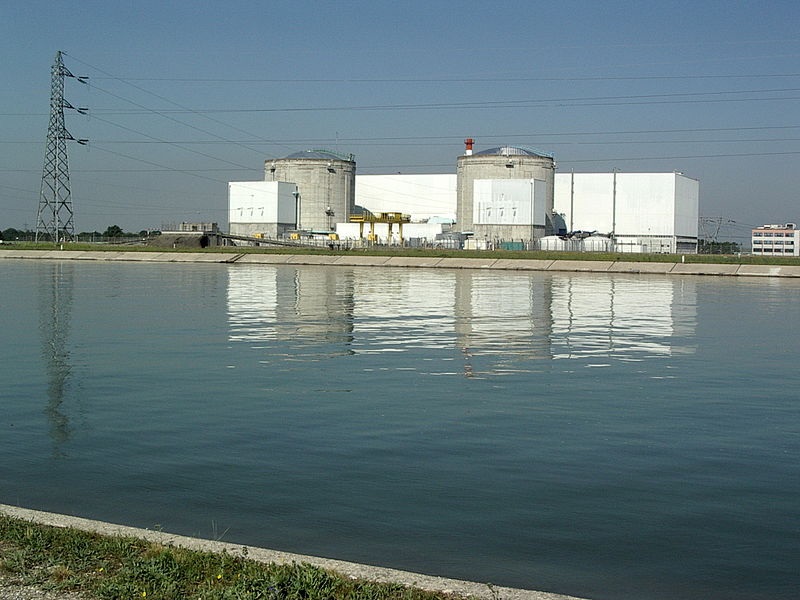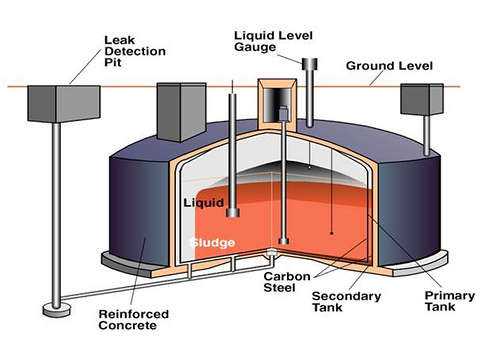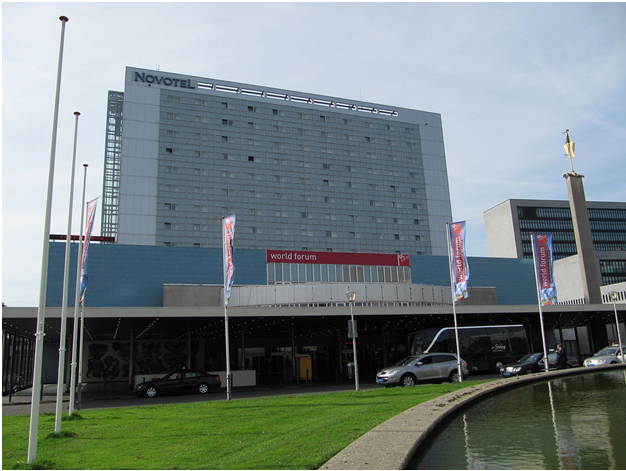
Blog
-
Geiger Readings for March 29, 2014
Ambient office = 103 nanosieverts per hourAmbient outside = 115 nanosieverts per hourSoil exposed to rain water = 101 nanosieverts per hourRaisins from Costco = 97 nanosieverts per hourTap water = 137 nanosieverts per hourFiltered water = 116 nanosieverts per hourPacific Cod – Caught in USA = 84 nanosieverts per hour -
Nuclear Reactors 111 – Nuclear Power Problems in France
A week ago, French environmental activists led by Greenpeace broke into the oldest nuclear power plant in France and occupied parts of the plant. The plant is located near Fessenheim which is on the border between France and Germany in the Alsace region. The plant has been operating for thirty seven years, seven years beyond the original licensed lifespan of the plant. This plant has had a series of nuclear and mechanical accidents, and is located on a known geological fault. Activists claim that the French plant near Fessenheim is an attractive target for terrorists or other nations hostile to France.
The German government has been pressuring the French to close the Fessenheim plant. Germany has decided to eliminate all nuclear power which has been supplying about thirty percent of Germany’s power needs. They recently published a report about possible threats to German nuclear power plants from earthquakes and have called for accelerating the dismantling of Germany’s fleet of nuclear power plants.
France has around sixty operating nuclear power plant. This tally does not include four “non-civil or military reactors.” These reactors continue to be operated because the French government says that they are too expensive to turn off. The dismantling costs would be much higher than the cost of continued operation. These four reactors are breeder reactors that produce plutonium at the rate of about seven tons a year. While plutonium can be used for reactors fuel, the output of these reactors can also be used to produce nuclear weapons. France already has over two hundred tons of plutonium which could be turned into more than twenty five thousand nuclear warheads. Since it is estimated that the explosion of a hundred nuclear warheads could cause nuclear winter and end human civilization, it seems that France has much more plutonium stockpiled than it would ever need for nuclear weapons.
A recent British report on French use of nuclear power concludes that France cannot afford to turn off her nuclear reactors. It is estimated that replacement of nuclear power generation in France would cost more than four hundred billion dollars. On the other hand, the report points out that continuing to operate France’s aging reactor fleet past their design lifetimes of thirty years will also be expensive and risky. Even decommissioning France’s nuclear power reactors over an extended time period would still cost over three hundred and sixty billion dollars.
France currently gets about eighty percent of her electrical power from nuclear power plants. Electricity from nuclear power reactors in France is seriously underpriced because of a lot of subsidies granted to the nuclear industry by the French government. Uranium mining, nuclear fuel fabrication, nuclear weapons development, reactor construction, fuel reprocessing and waste disposal are all subsidized. If non-nuclear power sources are desired for any growth is baseload power generation, the cost will go up because it will not enjoy the price support of nuclear subsidies. This, along with conservation, will tend to suppress growth in baseload power needs. If the government subsidies for nuclear power ever disappear, the cost of electricity will inevitably rise which could depress baseload power use.
France is facing increasing power generation costs whatever they decide to do. Continuing to operate the aging nuclear reactor fleet will cost hundreds of billions of dollars but decommissioning it will cost more. The fact that France wants to continue to export nuclear technology further complicates the picture.
Fessenheim nuclear plant:
-
Geiger Readings for March 28, 2014
Ambient office = 101 nanosieverts per hourAmbient outside = 126 nanosieverts per hourSoil exposed to rain water = 92 nanosieverts per hourBartlett pear from Central Market = 121 nanosieverts per hourTap water = 69 nanosieverts per hourFiltered water = 57 nanosieverts per hour -
Radioactive Waste 68 – Washington State Takes Legal Actions Against the U.S. Dept. of Energy Over Leaking Tank at Hanford
Recently I blogged about the conflict between the State of Washington and the Federal Government with respect to the cleanup of the horribly polluted Hanford Nuclear Reservation. Decades of development and manufacture of U.S. nuclear weapons at the Reservation have left behind a variety of radioactive contamination.
There are one hundred and forty seven buried single-wall tanks at Hanford built between 1943 and 1964 to contain mainly liquid waste. Unfortunately, there was far too much such waste for the tanks and some was poured directly into unlined trenches to soak into the ground. Sixty seven of these tanks have leaked some of their contents into the ground. Twenty eight double-walled tanks were constructed to take waste from single-walled tanks with the promise that they would not leak.
One such double-walled tank known AY-102 has been leaking for two years and there are six more of similar design which might leak in the future. Washington State law requires that the operators of Hanford to pump out any leaking tank within twenty four hours of the discovery of the leak. The State has been considering legal action against the Federal Government over the failure to empty the leaking tank.
The first legal action occurred on Friday, March 21st. The Washington State Department of Ecology demanded that the U.S. Department of Energy (DoE) provide a faster time table for emptying AY-102. The U.S. DoE had said that it might take more than two years to get the tank pumped out. Washington State is now demanding that the U.S. DoE begin pumping out the waste in AV-102 by September 1st, 2014. The removal of solid waste in the tank must commence by December 1st, 2015. The tank must be completely empty by December 1st, 2016. The U.S. DoE has responded with a complaint that the State action was announced with no prior notification of the U.S. They say that there may be problems pumping out the tank in the near future and that it does not currently pose a threat to the public. The second legal action happened this week as Washington State informed the U.S. Justice Department that the U.S. DoE is in violation of a 2010 consent decree that applies to the cleanup of Hanford.
A few days prior to the first legal action, the Governor of Washington State, Jay Inslee met with the U.S. Secretary of Energy, Ernest Moniz to consider the Federal Government’s plan for resuming work on the Hanford Waste Treatment Plant (WTP). This thirteen billion dollar project in intended to mix some of the most dangerous radioactive waste with sand and heat the mixture to create glass logs that can be safely placed in long-term permanent storage whenever a national nuclear waste repository is created. After years of work and billions of dollars, construction of the WTP was halted because of design concerns. The complexity of the mixtures held in the tanks was found to cause potentially catastrophic vibrations in the plant piping under the original design. There was also the danger of generation of hydrogen gas which could have exploded and released radioactive materials into the atmosphere threatening the nearby Tri-Cities. The U.S. DoE had promised to have the WTP up and running by 2022 but has said that it cannot meet that deadline.
Perhaps the Federal Government can divert funds recently requested for work on the U.S. nuclear arsenal to cleaning up the mess they left from previous nuclear weapons manufacture at Hanford.
Design of AY-102 double-walled tank at Hanford:
-
Radiation News Roundup March 27, 2014
Life as a Fukushima nuclear worker is uncovered in a comic. telegraph.co.uk
Work on removing fuel assemblies for the Fukushima spent fuel pool is suspended after crane trouble. enenews.com
The clean-up of spilled slurry material at the Australian Ranger uranium mine has been completed. world-nuclear-news.org
Nine Air Force commanders have been fired after nuclear missile cheating scandal. nydailynews.com
-
Radiation News Roundup March 27, 2014
Life as a Fukushima nuclear worker is uncovered in a comic. telegraph.co.uk
Work on removing fuel assemblies for the Fukushima spent fuel pool is suspended after crane trouble. enenews.com
The clean-up of spilled slurry material at the Australian Ranger uranium mine has been completed. world-nuclear-news.org
Nine Air Force commanders have been fired after nuclear missile cheating scandal. nydailynews.com
-
Geiger Readings for March 27, 2014
Ambient office = 102 nanosieverts per hourAmbient outside = 83 nanosieverts per hourSoil exposed to rain water = 97 nanosieverts per hourMango from Central Market = 111 nanosieverts per hourTap water = 87 nanosieverts per hourFiltered water = 82 nanosieverts per hour -
Nuclear Weapons 69 – Recent International Meeting on Disarmament at the Hague
Earlier this week, leaders from nuclear nations met for the Nuclear Security Summit at the World Forum in the Hague, Netherlands to discuss ways to reduce the global threat of nuclear terrorism. Three such meetings have been held since 2010 organized by the United States. At the first meeting in 2010, a deadline of 2013 was set “to secure all vulnerable nuclear material around the world within four years.” Although this has not been completely accomplished, since 2010 ten countries have gotten rid of their stockpiles of plutonium and highly enriched uranium including Chile, Serbia, Turkey, Austria, Mexico, Sweden, Ukraine, the Czech Republic, Hungary and Vietnam. It was announced at this week’s meeting that a new deadline of 2016 would be set to secure vulnerable nuclear materials.
The Nuclear Threat Initiative think-tank in Washington, D.C. published a report before the meeting that said almost two thousand metric tons of nuclear material that could be used to create nuclear weapons still exists around the world. Some of this nuclear material has very poor secured according to the report.
This week’s meeting will be dedicated “to improving security for global stocks of other radiological isotopes including cobalt 60 and caesium 137 which are used in industry, research and medicine but which could be used in a “dirty bomb” to irradiate a large urban area.” The International Atomic Energy Agency reported last year that, on average, there may be as many as one hundred thefts of small amounts nuclear materials every year. The small quantities stolen to date do not pose a serious threat.
At this week’s meeting, Japan pledged to ship six hundred sixty pounds of weapons-grade plutonium and four hundred forty pounds of highly enriched uranium to the United States. The U.S. had requested that Japan ship their weapons-grade radioactive materials to the U.S. for disposal. China has been complaining lately that it feared the Japanese were going to use the materials to create nuclear weapons. Belgium and Italy have also signed agreements with the U.S. to remove their stockpiles of surplus fissile materials that might be a threat if they fall into the wrong hands.
The Ploughshares Fund is an organization dedicated to nuclear disarmament and nuclear non-proliferation. The head of the Fund applauds the cooperative framework established by the series of meetings but says that much remains to be done. He points out that the current efforts are not sufficiently urgent to match the threat. There are terrorist groups in the world who are actively seeking nuclear materials to create weapons. The big question is whether or not all nuclear materials will be secured before terrorists managed to get their hands of sufficient nuclear materials to construct a weapon. The Ploughshare Fund sees the securing of nuclear materials as a race against time.
I applaud the work of the Ploughshare Fund and the meetings that are being held but I am afraid that they may not be enough. Russia is working on breeder reactors to generate plutonium which they intend to use for nuclear fuel domestically and for export. This will significantly increase the amount of weapons-grade material that will have to be protected in storage and during transportation. In addition, reactors are being built in third world countries that have corrupt governments which are unlikely to properly regulate and secure nuclear materials. Greater global efforts to increase nuclear security will be necessary to protect our civilization.
World Forum in the Hague, Netherlands:





